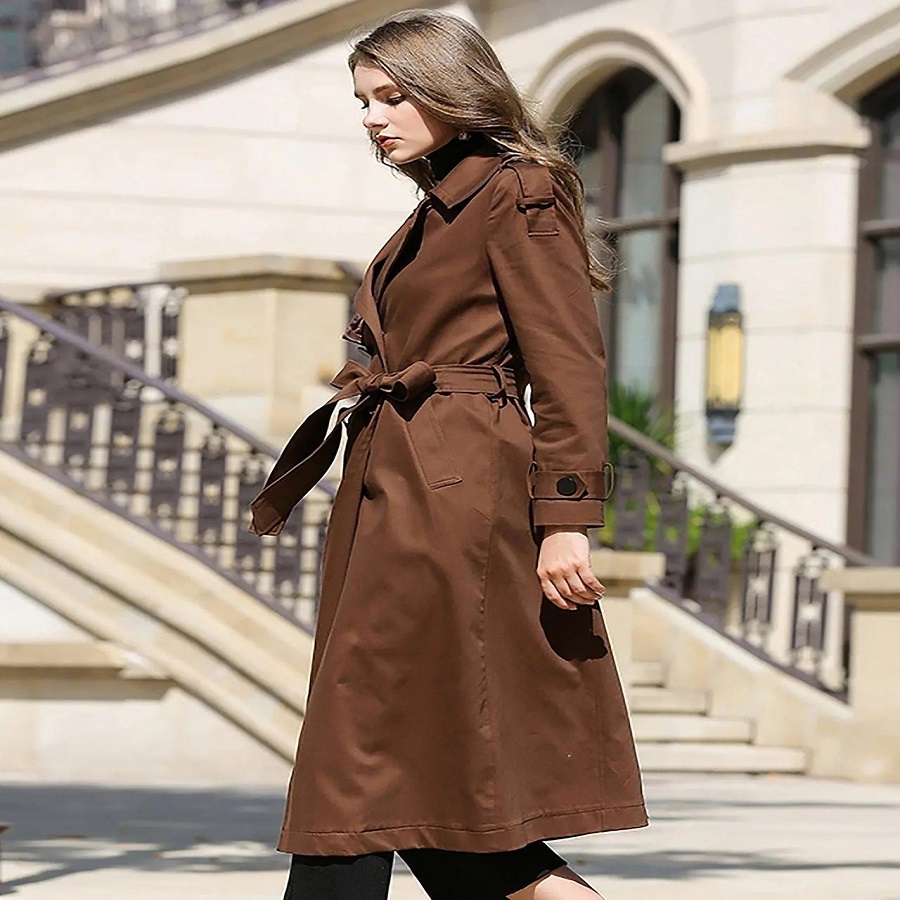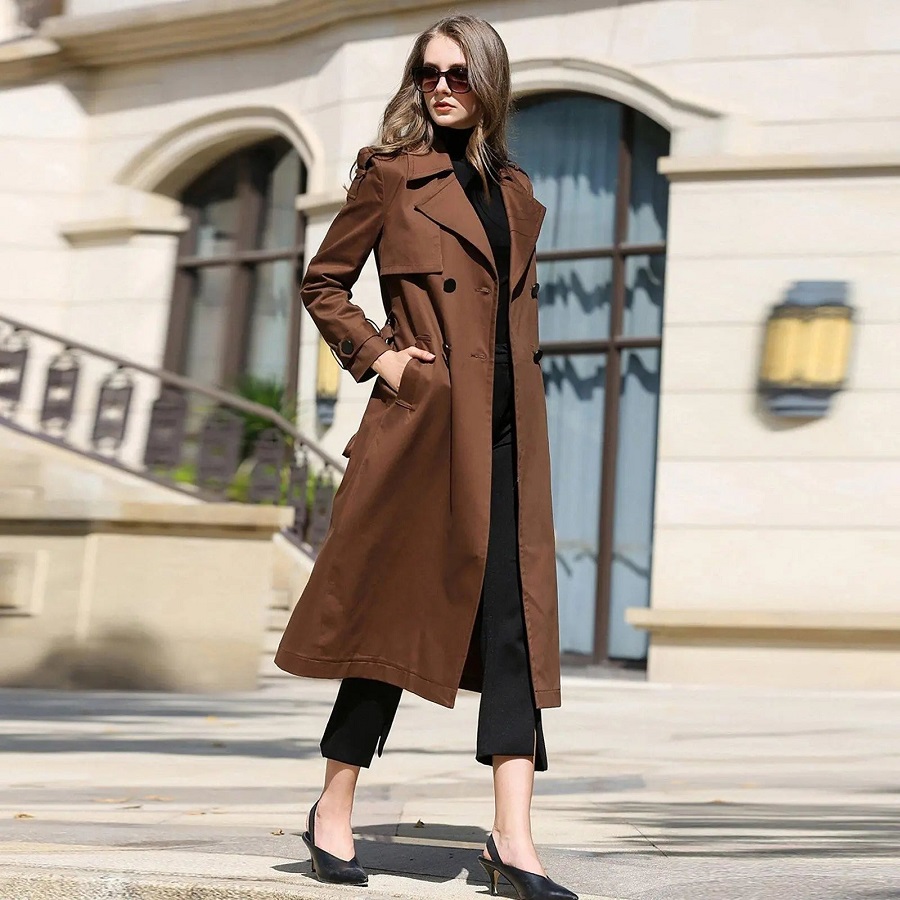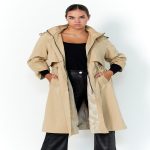The Evolution of Trench Coat Styles Through the Years
Trench coats have evolved significantly over the years. Originally designed for military use, they have now become a fashion staple. The evolution of trench coat styles reflects broader changes in society and fashion trends.
The Origins of the Trench Coat
The trench coat originated from the military needs of the early 20th century. It was crafted to protect soldiers from wind and rain in the trenches during World War I. The classic features such as double-breasted fronts, wide belts, and epaulettes served practical purposes on the battlefield. These features quickly made the transition to civilian fashion due to their functionality and style.
Key Style Transformations by Decade
Over the decades, the trench coat has seen various transformations:
- 1920s-1930s: Hollywood glamorized the trench coat, making it a symbol of style and mystery in cinema.
- 1940s-1950s: Post-war, the trench coat became more refined with a slimmer silhouette to match the fashion of the times.
- 1960s-1970s: The trench coat embraced bold colors and shorter lengths, reflecting the vibrant and experimental fashion of the era.
- 1980s-1990s: Oversized and deconstructed styles became popular, influenced by the rebellious ethos of these decades.
- 2000s-Present: Modern trench coats experiment with different materials and cutting-edge designs, while still retaining the classic elements that make a trench coat identifiable. Each decade’s style has added unique elements that have helped to redefine what a “custom trench coat” means to each generation.
 Essential Elements of Trench Coat Design
Essential Elements of Trench Coat Design
When creating a custom trench coat, designers must focus on both form and function. The elements selected for design not only define the aesthetic but also ensure the trench coat’s practicality and longevity. These crucial components include the choice of fabric and the specific details that give each coat its unique character.
Fabric Choices for Durability and Comfort
Selecting the right fabric is paramount when designing a custom trench coat. Key qualities include durability, weather resistance, and comfort for the wearer. Popular materials range from traditional heavy cottons, gabardine, or wool to modern synthetic blends which offer improved waterproofing and breathability. Designers might also consider softer materials that drape well for a more luxurious feel.
Details That Define Style: Buttons, Belts, and More
After choosing the fabric, attention turns to the style-defining details. These elements can make a significant impact on the overall look. Classic features like double-breasted buttons, wide belts, and epaulettes continue to be popular, while contemporary designs introduce innovative closures, stylish buckles, and eye-catching sleeve straps. Personalized touches, such as monogramming or unique stitching patterns, can add exclusivity to a custom trench coat. Ultimately, each small detail contributes to the trench coat’s distinctive style and functionality.
Incorporating Technology in Custom Trench Coats
In today’s fashion tech-savvy environment, incorporating advanced technology into custom trench coats is a top priority. By integrating innovative tech, designers are enhancing the functionality and uniqueness of each piece.
Smart Fabrics and Wearable Tech
The rise of smart fabrics is revolutionizing custom trench coat design. These materials can adapt to temperature changes, offering cooling or heating based on the environment. Other fabrics have been developed with embedded sensors to monitor health metrics like heart rate or stress levels. Wearable tech in trench coats isn’t just functional; it seamlessly blends technology with fashion, keeping the wearer connected and comfortable.
Weather-Resistance and Sustainability Features
Two crucial aspects of tech integration in trench coats include weather resistance and sustainability. Designers now frequently use materials that are both eco-friendly and capable of withstanding severe weather conditions. This includes the use of recycled fabrics and treatments that repel water and stains, ensuring the trench coat remains a durable wardrobe staple. Moreover, advancements in sustainable practices are continuously being explored, reducing the environmental impact and fostering a greener fashion industry.
The Design Process: From Concept to Creation
The journey of designing a custom trench coat combines artistic vision with precise technical skills.
Sketching and Pattern Making
Designing a custom trench coat begins with a sketch, the blueprint of the coat’s final look. Sketches detail the coat’s shape, button positioning, collar style, and more. Next, pattern making translates sketches into actual sizes and shapes on paper, which act as guides for cutting the fabric.
Pattern makers must consider the fabric’s drape and movement to ensure the coat’s fit and comfort.
Material Selection and Tailoring Techniques
After drafting the pattern, the next step is selecting materials that align with the desired quality and functionality. Each custom trench coat requires a careful balance between aesthetics and endurance. Tailoring techniques become vital at this stage, with each stitch and seam contributing to both design and durability.
Advanced sewing methods assure the coat can withstand regular use, while creating the desired silhouette for the wearer. The value of an excellent custom trench coat is often seen in the precision of its tailoring and the flawless finish of each edge and buttonhole.
Key Considerations for Personalization
Personalization is central to designing a custom trench coat that stands out and satisfies clientele. Here are key aspects to consider during this process.
Color Customizations and Trends in 2024
Color choices in custom trench coats set the tone for the overall design and impact how the garment is perceived. Trends in 2024 favor a mix of classic and adventurous hues. Neutral colors like beige, tan, and black remain timeless favorites. Recent trends emphasize bold and expressive colors like burnt orange, olive green, and royal blue. Pastel shades are also emerging, offering a soft and modern twist to the trench coat palette.
Designers should stay updated with the season’s trends while also offering a range of custom options. Clients may prefer colors that align with their personal style or the latest fashion trends. Offering a mix of classic and trending colors ensures that custom trench coat designs remain both versatile and stylish.
Choosing the Right Cut for Different Body Types
The cut of a trench coat can complement various body shapes, enhancing the wearer’s features. Whether crafting for broad-shouldered frames or petite figures, finding the right silhouette is pivotal.
For tall individuals, a longer hemline can accentuate height without overwhelming the shape. Shorter or cropped styles can work well on smaller frames, creating a sense of proportion. A well-fitted trench with a cinched waist flatters almost every body type, offering a structured yet comfortable feel.
Designers must be adept at identifying cuts that flatter each unique body type. Providing clients with a selection of tailored options ensures that the custom trench coat not only aligns with personal preferences but also strikes the perfect balance between comfort and visual appeal.
Marketing Your Custom Trench Coat Designs
Marketing your custom trench coat designs involves strategic online outreach. Understanding modern digital marketing and the use of influential social media figures will enhance your visibility and sales.
Digital Marketing Strategies for Fashion
Innovative digital marketing strategies are crucial for the success of your custom trench coat collections. SEO, content marketing, and data-driven advertising boost your brand’s online presence. Use targeted ads to reach potential clients who search for unique fashion items. Ensure your website showcases your trench coats with high-quality images and detailed descriptions. Blogs and articles about trench coat styling tips can attract more visits.
Utilizing Fashion Influencers and Social Media
Collaborate with fashion influencers to tap into their follower base. Choose influencers whose style aligns with your brand vision. They can wear your trench coats and share photos and videos on platforms like Instagram, Twitter, and TikTok. Create shareable and engaging content that fans of these influencers will want to repost. Running exclusive promotions on these platforms can also increase engagement and sales.
Future Predictions for Trench Coat Fashion
As custom trench coats continue to evolve, the future looks promising with a blend of innovation and individual expression.
Innovations on the Horizon
The next frontier in custom trench coat design is set to be bold and imaginative. Here are some innovations we might soon witness:
- Sustainable Materials: More eco-friendly materials will become standard in trench coat production.
- Interactive Designs: We might see coats with smart touchscreens integrated into the fabric.
- Customization Technology: 3D printing and AI design could offer unique, personalized fit options.
- Multi-Functional Coats: Future trench coats may have more versatile features, like transformable lengths or built-in storage solutions.
Technological advancements are pushing boundaries, allowing for more personal and sustainable custom trench coat designs.
How Consumer Preferences are Shaping the Market
Consumer preferences play a crucial role in shaping trench coat trends. Buyers seek trench coats that reflect their unique styles while being functional. Personalization is not just a trend – it’s a demand. Customers want:
- Color Variety: An extended palette of colors, including eco-conscious dyes.
- Fit for All: Inclusive sizing and styles that cater to diverse body types.
- Tech Integration: Smart features for connectivity and adaptability to weather changes.
By understanding and adapting to these consumer preferences, designers can ensure their custom trench coat lines meet the expectations of a modern and diverse audience. The future of trench coat fashion is customer-driven, with an emphasis on inclusivity, technology, and sustainability.




